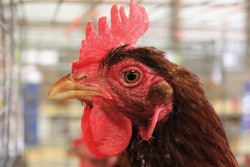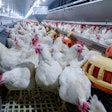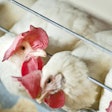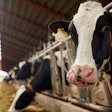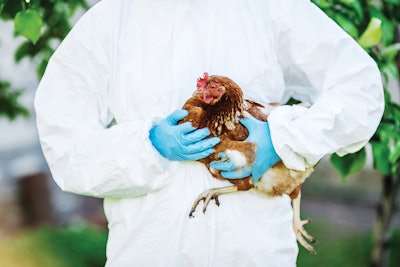
A combination of next generation diagnostics and probabilistic modeling quantifies oocyst per gram patterns that could help poultry producers better detect and monitor coccidiosis in poultry.
Coccidiosis is caused by protozoan parasites called coccidia that belong to the Eimeria genus. Eimeria go through three live stages, including the oocyst, which is shed in the feces of infected birds.
Spread of coccidiosis through a poultry flock occurs quickly, typically in less than a week. Surviving birds typically underperform and are more susceptible to necrotic enteritis caused by Clostridium perfringens and Salmonella.
“Integrators are under significant pressure right now to improve their margins,” Meghan Bowman, product manager, Data Platform, Ancera, explained. “This platform helps companies discover areas where they could be suffering unnecessary economic losses in live production.”
At the 2023 Poultry Tech Summit, Bowman will discuss a new way to monitor for coccidia through next-generation diagnostics and probabilistic modeling that classify Eimeria by size and quantify Oocysts per Gram (OPG) patterns.
The Poultry Tech Summit, scheduled for November 6-8 at the Hilton Atlanta Airport in Atlanta, Georgia, focuses on the transition of innovative technologies into commercial applications to advance the poultry industry.
Registration for this event is now open. Early bird savings are available.
Real time data for earlier coccidiosis intervention
The technology platform uses microfluidics, fluorescent microscopy and computer vision quantify and classify the oocysts present in fecal samples. This information is aggregated with relevant data and the results are shared in real-time on a mobile app.
The mobile app is designed to demonstrates oocyst per gram performance at various age intervals that were defined in conjunction with the goals of the poultry farm, showing either green for as expected or orange for outside of the expected range when it comes to Eimeria populations.
Poultry veterinarians can use this information to make program adjustments six to eight weeks earlier than could have been accomplished by waiting for flock performance results.
“As we start building out these patterns and correlating them to outcomes, we can identify risks sooner by evaluating it to be on the same trajectory as flocks with known outcomes,” Bowman said.
More than 50 million birds have been monitored with this technology platform.
Attend the 2023 Poultry Tech Summit
Join an exclusive international gathering of industry-changing innovators, researchers, entrepreneurs, technology experts, investors and leading poultry producers at the 2023 edition of Poultry Tech Summit on November 6-8 at the Hilton Atlanta Airport in Atlanta, Georgia.
Attendees can expect the same groundbreaking innovation and insightful presentations that made the previous events well-attended with deep dialogue on new prospective solutions and next-generation technologies. Poultry Tech Summit focuses on the transition of innovative technologies into commercial applications to advance the poultry industry.
Registration for this event is now open. Early bird savings are available.


